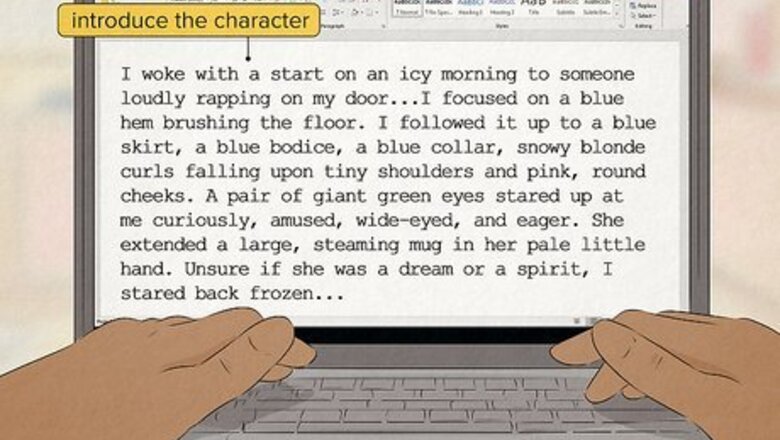
views
Introducing your Love Interests
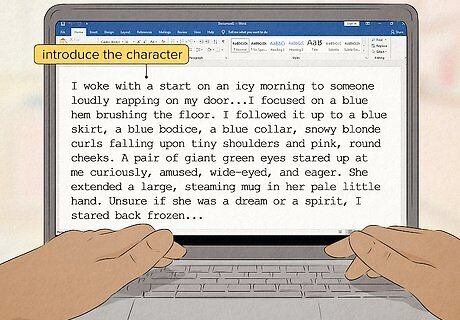
Introduce someone for the reader to love. You might begin by focusing explicitly on one character. Choose one of the people that your story focuses on, namely someone who will fall into or out of love, or will dance anywhere in between. It may sound predictable, but readers are looking for someone to love too – and they’ll likely fall for whomever you introduce first. Prepare the reader to care for a character throughout the story, and to invest their own emotions in that character’s achievement of happiness and contentment. For instance, introduce a character by showing them experience some sort of significant personal revelation about themselves or another character in the story. Equally reliable; introduce a character as they’re enduring an undeserved hardship.

Introduce the story’s love interests to each other. This may seem a bit forward, but it doesn’t necessarily have to be romance at first sight. However the introduction goes, provide the reader with the inclination that this is a relationship to take note of, even if you also include a bit of misdirection to imply some complicating factors. For example: As Sarah walked down the gangplank, a man with mane-like hair approached. “It is thrilling to meet you. My name is…” He trailed off, rather stunned by the beauty of a woman he had imagined a thousand times, but whose actual appearance surpassed his fantasies. She looked at him for a moment and said, “Fetch me a horse.”

Make hurdles comical, heart wrenching, or seemingly insurmountable. In fact, it may be especially effective to give your lovers a few hurdles to overcome in order to achieve each other’s love. This appeals to several different components of intrigue, as it provides a struggle to invest in both emotionally and in terms of plot suspense. For instance, “The man turned to beckon a servant. He dropped his rope, forgetting that it was wrapped around the pole and attached to the gangplank. Just then, a gust of wind pulled the boat from the dock. The rope unwound with incomprehensible speed, dropping the gangplank and a visibly displeased Lady Sarah into the bay.”
Exploring Options for Powerful Opening Lines

Condense the opening moment into a single line. Even if you plan to portray the opening moment over the course of the first few pages – which is totally fine – consider how you would convey the moment in a single line. You may even wind up using this line, whether to literally start the story or within those first few pages. Either way, thinking about specific, attention-wrangling lines will help you keep the start of your love story focused on the potency of the first emotional moment you want your reader to experience.
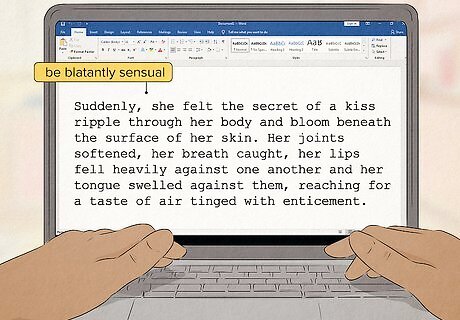
Be blatantly sensual. There’s nothing like a dose of sensuality to get a human intrigued. You can do so with a bit of taste, while still guaranteeing an uptick in your reader’s blood pressure. Contemplate your own response to such a beginning: “Suddenly, she felt the secret of a kiss ripple through her body and bloom beneath the surface of her skin. Her joints softened, her breath caught, her lips fell heavily against one another and her tongue swelled against them, reaching for a taste of air tinged with enticement.”
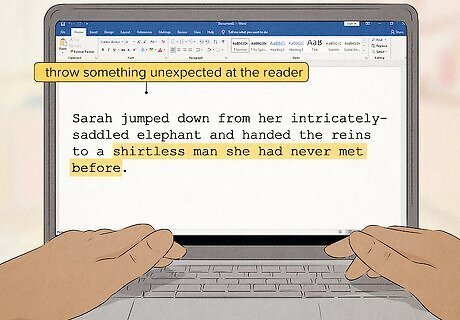
Get your reader wondering. A particularly fun and unsurprisingly effective way of grabbing your reader’s attentions is by throwing something at them that’s unexpected and demands explanation. This will intrigue them both by making them wonder what’s going on, and by simply surprisingly them. In other words, begin with a premise that raises questions in the reader’s mind. For instance, “Sarah jumped down from her intricately-saddled elephant and handed the reins to a shirtless man she had never met before.” Alternatively, “The cauldron boiled thickly and looked of effervescent syrup, but her heart sank quickly as she tossed it into the stew.”
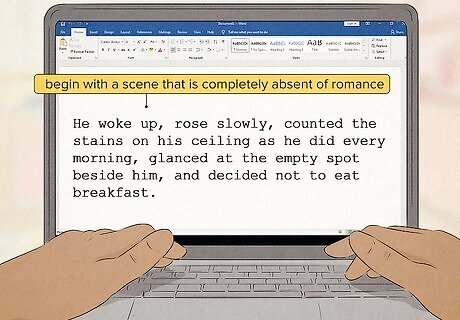
Sadden, disgust, or frighten your reader. Some of the most compelling emotions – for both your characters and your readers – are not necessarily the most pleasant. Play to people’s desire for the unsavory and depressing by beginning with a scene that is completely absent of romance. For instance: “He woke up, rose slowly, counted the stains on his ceiling as he did every morning, glanced at the empty spot beside him, and decided not to eat breakfast.” And of course: “Her cats began licking her ankles where their tongues had already thinned the fabric of her tights as soon as she entered. She sighed at the darkened patch of carpet in the center of the room, knowing she could remove the visual evidence, but never the odor.”
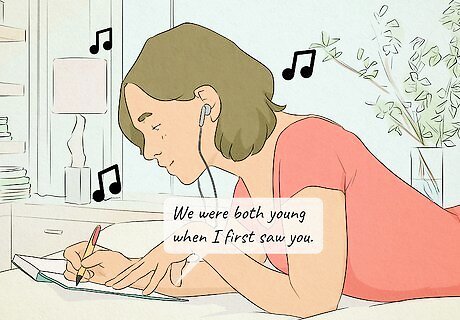
Get inspiration from other authors and songwriters. Both contemporary and classic story tellers can be a great source of inspiration. For instance, tune in to your local pop station. Depending on the level of literary legitimacy you’re shooting for, radio singles are ripe for the romantic-one-liner picking. Take, for instance: “We were both young when I first saw you." Note that even the contemporary artists reference classic storytellers. Consider the lyrics from a popular radio single: “Marry me, Juliet, you’ll never have to be alone.” This line pays homage to Shakespeare by referencing a well known romantic narrative.
Creating Intrigue in the Opening Scene

Choose the moment your readers will enter the story. You may already know what you’d like to contain in the first scene in terms of plot and character introduction, but are unsure of the exact moment, the perfect bit of dialogue, or the opening narrative fact with which to bring your reader into the fold. Identifying this moment may require a bit of reflection on your part. The beginning is important because it lures your reader into the story. Even if the opening scene is not important to the plot, it needs to be interesting. Hook your reader within a few pages, or better yet: a few paragraphs.

Introduce suspense on the very first page. While there are no concrete rules for how a love story needs to begin, there are some narrative tropes that continue to melt hearts. Among them; consider the implication of an oncoming challenge to one of the story’s love interests, a dramatic change in circumstances, or a blatant threat to a character or a relationship between characters. A common route here is a moment in which danger or the threat of danger are recognized or experienced by a character who will be featured prominently in your story.

Excite the reader with immediate action. Another great option for starting your story is choosing a moment that will immediately pull the reader into the story line with a compelling action sequence in the opening scene of your story. Make sure that any initial action sequences are readily comprehensible. There doesn’t even have to be any actual danger; it is more than enough to simply convey a sense of peril that the reader can relate too. Though you may be tempted to get the story rolling, keep initial action sequences simple. Maintain a focus on luring the reader in, without asking them to do too much thinking.

Question your own decision. In order to actually portray the moment most dramatically, consider why the moment is worth starting your story with. Literally ask yourself, “Why should my story start with this moment?” List all of the reasons, including the specific relevance of the moment to each major character and to your anticipated plot developments. Look over the list and identify the most compelling links between this moment and other aspects of your story.
Amplifying the Scene’s Emotional Potency
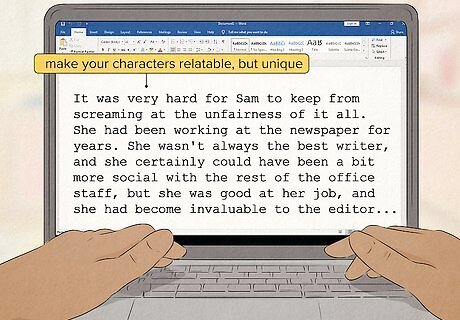
Make your characters relatable, but extraordinary. Present your characters as otherwise ordinary humans that have been inspired by the immense power of their love for another. More to the point, avoid any potential for your story to read too simply. You need more than “Beth meets Sue, they fall madly in love, and happiness blossoms in their life ever-after.” For instance, when introducing your character, make it clear that they don't have time for relationships because they have to work overtime in order to pay the medical bills for a relative. Later on, have their love interest, unbeknownst to them, put in overtime as well in order to help fund the costs of the relative's medical treatment. This selflessness will make them more likeable.
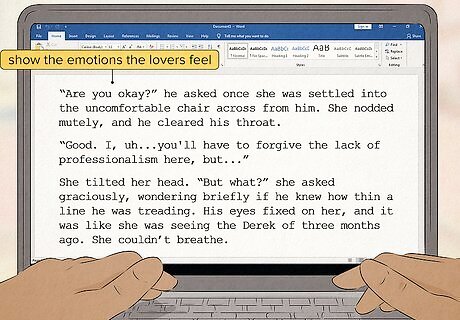
Bank on the appeal of emotional intrigue. Love stories derive their appeal in part because they allow both authors and readers to explore particularly emotional content of all sorts. Emphasize the strength of the emotions the lovers in your story feel, by implying, early on, the dramatic efforts they are willing to make on behalf of their love interest or relationship. For instance, have a character say or do something emotionally significant to prove their commitment to someone they care about, perhaps without the other person knowing about it.
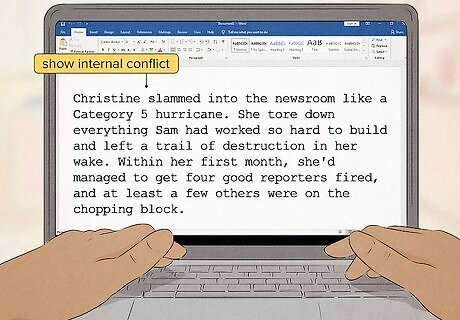
Imply internal conflict. Maybe your characters aren’t even sure they’re in love! Such an implication can be as compelling as the most certain love in the history of humankind. Consider quite literally starting your story with the admittance of such uncertainty, with characters reflecting on their love or level of commitment to another.
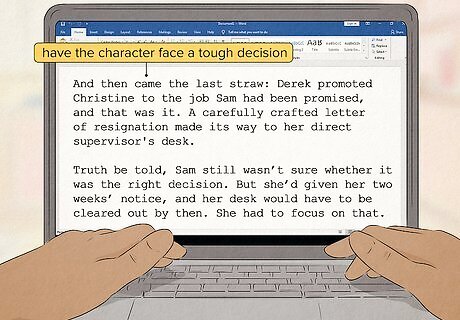
Have a character face a tough decision. One way to ensure they stick around beyond the start of your story is your inclusion of a scenario in which life presents a character with an opportunity or choice. Make a character even more relatable by emphasizing their struggle in making a decision or responding to a significant development in the story. For instance, have a character seize an opportunity to get a reader cheering for them, or miss one if you want your readers to sympathize.
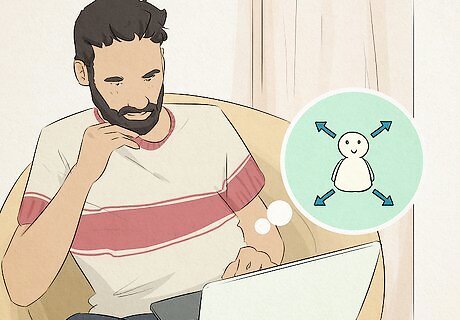
Expand upon your characters following the opening moment. A character should never be exactly who the reader thinks they are when you first introduce them. Even if they maintain incredible consistency, you need to add depth to your characters to develop a solid start into a meaningful and complete love story. Write strong protagonists – both male and female – who are independent and capable of making decisions on their own. Give every character a reason to be respected by your readers. This rules out the lover simply waiting to be saved, as well as a “villain” without any relatable characteristics.

Include a healthy dose of character flaws. For instance, consider making your protagonist’s flaws apparent – at least to some degree – at the very start of your story. Alternatively, include a rather apparent antagonist in the beginning of the story who slowly becomes equally as likable as your protagonists. Stated otherwise, call your reader’s assumptions into question. Get your readers to feel as though they really understand the character, then shake things up. Show them that even characters in a book can surprise them, just like real people.


















Comments
0 comment